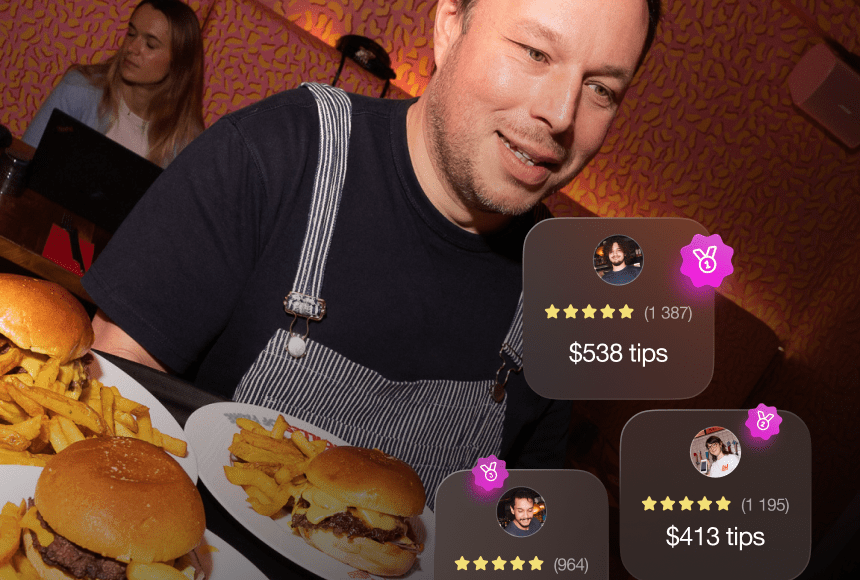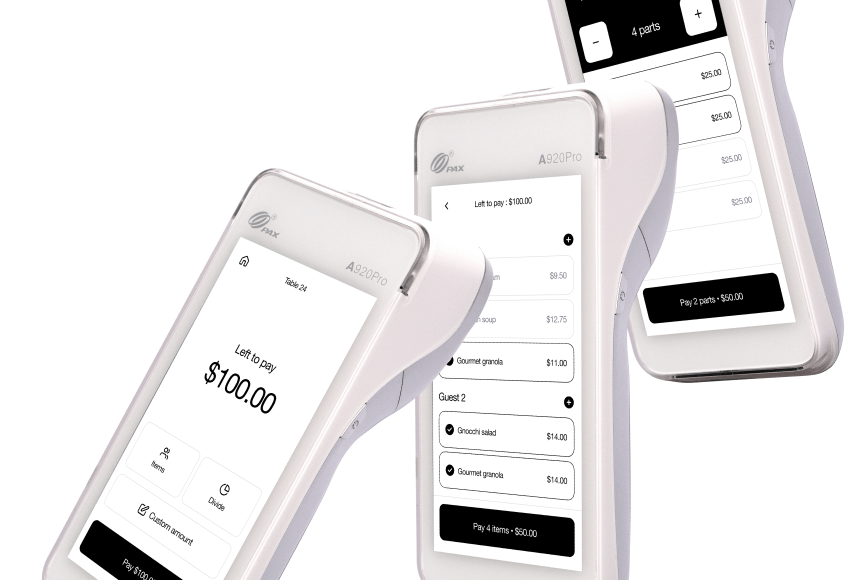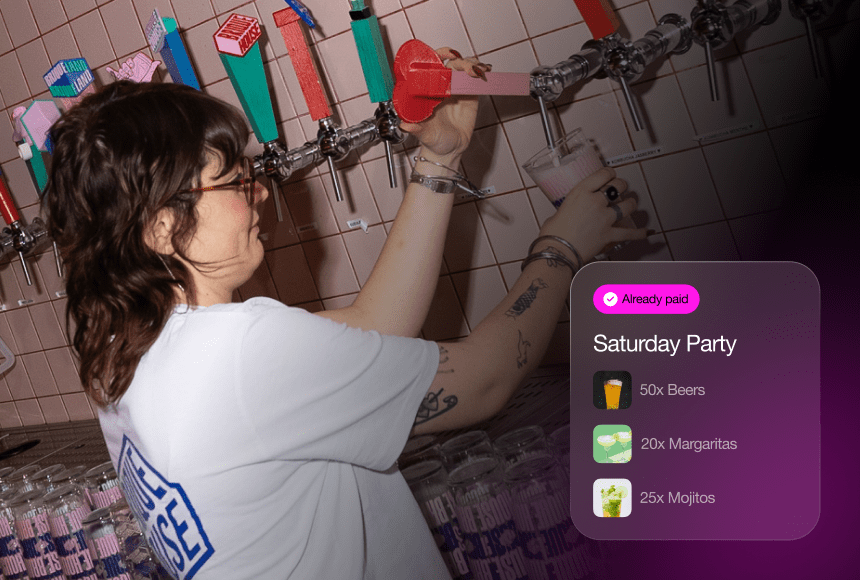
Transforming Gratuities for a Modern Restaurant Experience
Why Restaurants Are Embracing Digital Tipping
Picture the end of a busy shift in your restaurant. Servers gather around the register, sorting through a mix of cash, credit slips, and scrawled notes, trying to piece together who earned what. It’s chaotic, it’s time-consuming, and it can lead to confusion—or worse, disputes. Now imagine a world where all your gratuities flow seamlessly through an app or digital platform, automatically distributing tips and recording every transaction in real time.
That’s the promise of digital tipping—a streamlined method that aligns with the broader shift toward cashless payments. According to the National Restaurant Association, over half of diners prefer some type of contactless or digital option when settling their bills (source). If that’s how your guests want to pay, why not apply the same convenience to their tips?
In this article, we’ll break down how digital tips actually work, from the basic mechanics to the major benefits for you, your staff, and your bottom line. If you’re ready to cut down on end-of-night chaos and offer a modern, guest-friendly experience, read on.
1. The Basics of Digital Tipping
Digitizing your gratuities can take several forms, but the core idea is the same: rather than dealing with physical cash or writing tip amounts on receipts, diners leave their tips via an electronic process. Often, this is integrated with the restaurant’s overall payment method. Here’s a quick overview:
- Point-of-sale (POS) integration: When a diner pays by credit card on a digital terminal, they’re prompted to choose a tip percentage or amount. That figure is saved in your POS for later distribution.
- QR code payment: Guests scan a code at their table, open a payment page on their phone, and see preset tip suggestions before finalizing. The system logs the tip in real time.
- Mobile apps: Some restaurants or third-party platforms let customers log in via an app, order, pay, and tip right there—no separate card or cash needed.
Regardless of which route you choose, the diner sees a user-friendly interface that asks for a tip, typically suggesting percentages (like 15%, 18%, 20%) or allowing a custom amount. They select, tap, and the tip is logged. It’s that simple.
2. Real-Time Recording and Automated Distribution
One of the biggest selling points of digital tipping is the behind-the-scenes efficiency it unlocks. Instead of collecting piles of receipts or fishing out dollar bills from a crowded till, each gratuity is digitally tagged to a specific transaction. The system then tallies and allocates those tips according to rules you’ve set in advance.
For instance, if your restaurant operates on a pool system, the software can split all tip income among staff based on hours worked, roles, or other parameters. If you prefer to keep tips individual, the system logs each server’s tips separately, ensuring no crossovers or miscounts. At the end of the shift—or even in real time—managers can see exactly how much each employee has earned. This transparency eliminates guesswork, which not only streamlines your day but also reduces the odds of staff disputes.
3. How Digital Tips Benefit Servers and Staff
While managers appreciate the organizational perks, servers and back-of-house staff also gain advantages from going digital. Let’s explore why they might actually prefer tapping on a screen over the old-fashioned tip jar or slip of paper:
- Clarity on earnings: Instead of waiting until closing time to see if they did well, employees can often monitor tip totals throughout the shift—motivating them to keep performance high.
- Less end-of-shift hassle: No one enjoys sifting through wrinkled bills at midnight or deciphering who gets a piece of that big party’s gratuity. With a digital approach, everything is accounted for automatically.
- Potentially higher tips: Digital tipping often presents suggested percentages. Diners frequently pick one of those tiers rather than calculating a random figure. That small prompt can boost overall tip amounts, directly benefiting your staff’s pay.
When your team sees the system as a fair, easy way to get their dues, morale tends to rise. And that’s a win for the entire restaurant dynamic.
4. Easing Tax and Payroll Compliance
Navigating taxes and wage requirements for tipped employees can be complex. Under-reporting or misreporting tips could lead to compliance issues, fines, or staff shortfalls. Going digital helps reduce these risks:
- Accurate data flow: Each tip amount is documented in your POS or payment platform, so there’s a paper trail (or rather, digital trail) for audits or paychecks.
- Effortless wage checks: If you track tip credits against minimum wage, digital logs simplify verifying that everyone meets wage laws.
- Streamlined payroll: Some systems send tip data to your payroll software, automatically factoring in the correct amounts for tax withholding or net pay. That’s one less spreadsheet for managers to juggle.
This clarity might seem subtle day to day, but it pays off big when tax season rolls around or if labor authorities come knocking.
5. Catering to Evolving Guest Preferences
Long gone are the days when every diner rummaged for exact change or scrawled a tip on a paper receipt. Many guests now favor contactless experiences—like scanning a QR code to view the menu, order, and pay in seconds. If your tip process remains stuck in a cash-only approach, you risk alienating an entire demographic of tech-savvy customers. A digital tipping setup aligns with their lifestyle and signals that you run a forward-thinking establishment.
- Convenience at checkout: The easier you make finalizing the bill, the more positive the guest’s last impression of your place.
- Simplified group dining: For large parties, multiple people can handle their share via individual scans—removing the headache of splitting the check or the tip.
- Less awkwardness: Many diners appreciate not having to pass cash or scribble out a tip while the server hovers with a card machine. A swift digital option feels discreet and modern.
By meeting guests where they are, you’ll likely see them leave happier—and maybe even tipping a bit extra for the convenience.
6. Reducing the Risk of Errors and Loss
Let’s face it: human mistakes happen. A cashier shortchanges a server, or a staff member forgets to pass on a tip from a large table. Even theft can’t be ruled out entirely when there’s a lot of cash floating around. By switching to digital tips, you address these common pitfalls at their root.
- Security: Digital transactions reduce the chance of “missing” cash or questionable math after a busy shift.
- Automated calculations: The system does all the splitting, so you won’t have to trust hurried employees to get it right at closing time.
- Fewer manager headaches: If a server believes they were shorted, you can show them the real-time digital record, cutting disputes short and preserving a positive work environment.
This level of certainty frees up managers to focus on more strategic tasks—like how to up-sell this week’s special or schedule staff for maximum efficiency.
7. Real-Time Insight into Performance
Another perk of digitized tips is the data you gain. Because the entire tipping process is electronic, you can analyze patterns. For instance, does your weekday lunch crew collect fewer tips than the weekend team, even factoring in foot traffic? Does a newly trained server see better tips than a long-time employee, suggesting they’re more enthusiastic with customers?
- Identify star performers: Reward those who consistently pull in higher percentages, or have them train newer staff on how to engage with diners effectively.
- Adjust staffing to match demand: If tips spike at a certain hour or day, scheduling your best servers at those peak times could lift your overall revenue.
- Spot training needs: If tips are sub-par in certain shifts, it may signal you need to refine staff approach or look closer at the guest experience during those periods.
Such insights help you continuously improve, turning data into a competitive advantage in a fast-paced industry.
8. Integrating Tipping with Loyalty and Marketing
Digital tipping can do more than expedite payments—it can connect with other facets of your restaurant’s operation. For example, some solutions allow guests to leave a tip and then receive a prompt to join a loyalty program or drop a quick Google review.
- One-stop engagement: Right after tipping, diners are typically in a good mood. Encouraging them to leave a 5-star review or sign up for rewards can be more effective in that positive moment.
- Simplify promotions: If your platform detects a loyal guest scanning in, you can offer them a personal greeting or discount, turning a mundane act into a personalized interaction.
These integrations allow your restaurant to seamlessly gather customer feedback, build brand loyalty, and further heighten that sense of a well-run, guest-friendly experience.
9. Speeding Up Table Turns and Checkout
In a high-traffic establishment, every minute spent waiting for the check can be a minute lost. And if your staff needs to collect final payments in the middle of a rush, they might struggle to keep up with new arrivals. Digital tipping, especially when linked to a QR code payment system, can alleviate this bottleneck:
- Immediate checkout: The second a diner finishes their meal, they can scan, pay, tip, and go—no hunting for a server to deliver a bill.
- Improved staff focus: Freed from dealing with multiple payments, servers concentrate on delivering more attentive service or turning tables faster.
- Enhanced customer satisfaction: Patrons leave with a sense of control and efficiency, which often translates into better reviews or more repeat visits.
When adopted at scale, this efficiency can generate tangible increases in daily covers—and keep that wave of positive diner sentiment rolling in.
10. Making Your Restaurant Future-Ready
For all the immediate benefits—like easier tip splits and reduced friction—a digital tipping system also sets you on a path for future adaptability. Payment trends will likely continue evolving, and as manager or owner, you need a solution that’s flexible enough to integrate new features, adopt next-gen loyalty tools, or adapt to shifts in local wage/tip legislation.
By choosing a robust platform now, you won’t have to overhaul your approach every time technology or regulations shift. Whether it’s new devices or fresh rules about tipping distribution, you’ll already have a digital foundation to tweak as needed.
Where to Start
Implementing digital tips can look different for every restaurant. Some owners prefer a direct integration with their POS, while others find a standalone platform that synchronizes tip data with daily sales. Consider these steps to ease your transition:
- Assess your current system: Identify where your POS might handle integrated tipping or if you’ll need an external tool that merges seamlessly with your payment flow.
- Choose the right features: Think about whether you want tip pooling, preset tip suggestions, or real-time staff dashboards. Focus on what solves your biggest pain points first.
- Train your team: A short workshop can show them how to explain digital tipping to customers and check their own totals, building confidence from day one.
- Promote the feature to diners: Table signs or a quick mention from the server can reassure guests they can tip effortlessly without fumbling for cash.
Once in place, monitor how your staff and guests respond. Are tips rising? Are servers finishing shifts faster? Use those insights to refine your approach. Over time, you’ll discover the best ways to leverage digital gratuities to meet your unique goals—whether that’s boosting staff satisfaction or turning tables at record speed.
The Next Chapter in Restaurant Tipping
As more diners pay with their phones, contactless cards, or even digital wallets, it’s only logical that gratuities join the digital revolution. Not only does this approach align with modern consumer habits, but it also tackles some of the oldest headaches in the industry: messy tip distribution, unverified totals, and staff conflicts over fairness. By automating the tip process and linking it to a transparent, user-friendly system, you’ll cut down on stress for everyone involved.
Ultimately, digitized tips aren’t just about collecting money differently. They’re about harnessing the power of technology to make your team’s work smoother, your guests’ experience more streamlined, and your overall operation more profitable. In a world where efficiency and excellent service can set you apart from the competition, embracing digital tipping might be the easiest—and most gratifying—upgrade you can make.
Find out more today
Drop us your details below and we’ll reach out within the next 24h
More tips means a better service.
More tips mean better guest-experience, and better staff-retention.



